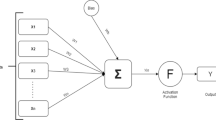Abstract
The importance of predicting future values of a time-series transcends a range of disciplines. Economic and business time-series are typically characterized by trend, cycle, seasonal, and random components. Powerful methods have been developed to capture these components by specifying and estimating statistical models. These methods include exponential smoothing, autoregressive integrated moving average (ARIMA), and partially adaptive estimated ARIMA models. New research in pattern recognition through machine learning offers innovative methodologies that can improve forecasting performance. This paper presents a study of the comparative results of time-series analysis on nine problem domains, each of which exhibits differing time-series characteristics. Comparative analyses use ARIMA selection employing an intelligent agent, ARIMA estimation through partially adaptive methods, and support vector machines. The results find that support vector machines weakly dominate the other methods and achieve the best results in eight of nine different data sets.




Similar content being viewed by others
References
Atkinson AC (1985). Plots, Transformations, and Regression: An Introduction to Graphical Methods of Diagnostic Regression Analysis. Clarendon Press: Oxford.
Box G and Jenkins G (1976). Time-Series Analysis: Forecasting and Control. Buxbury Press: Boston.
Burns A and Mitchell W (1946). Measuring Business Cycles. National Bureau of Economic Research: New York.
Diebold F and Rudebusch G (1996). Measuring business cycles: a modern perspective. Rev Econom Stat 42: 1082–1092.
Fernandez R (1999). Predicting time-series with a local support vector regression machine. ACAI 99: 425–434.
Goodrich R (1989). Applied Statistical Forecasting. Business Forecast Systems: Belmont, MA.
Hansen JV and Nelson RD (2003). Forecasting and recombining time-series components using neural networks. J Opnl Res Soc 54: 307–317.
Huber P (1981). Robust Statistics. Wiley: New York.
Makridakis S and Hibon H (2000). The M3-competition. Inter J Forecast 16: 451–476.
Makridakis S et al (1982). The accuracy of extrapolation (time-series) methods: results of a forecasting competition. J Forecast 1: 111–153.
McDonald J and Newey W (1988). Partially adaptive estimation of regression models via the generalized T distribution. Econ Theory 4: 428–457.
McDonald J and Xu Y (1994). Some forecasting applications of partially adaptive estimators of ARIMA models. Econ Lett 45: 155–160.
Mukherjee S, Osuna E and Girosi F (1997). Nonlineaar prediciton of chaotic time-series using a support vector machine. In: Principe J, Gile L, Morgan N, Wilson E (eds). Neural Networks for Signal Processing VII—Proceedings of the 1997 IEEE Workshop, pp 511–520.
Muller K-R et al (1997). Predicting time-series with support vector machines. In: Gerstner W, Germond A, Hasler M, Nicoud JD (eds). Artificial Neural Networks—ICANN'97, pp 999–1004.
Newbold F and Bos T (1993). Introductory Business and Economic Forecasting. South-Western Publishing: Cincinnati, OH.
Scholkopf B and Smola A (2002). Learning with Kernels. MIT Press: Cambridge, MA.
Shiskin J, Young AH and Musgrave JH. (1967). The X-11 variant of the census method II seasonal adjustment program. Technical Paper No. 15. Bureau of Census.
Stellwagen E and Goodrich R (1999). ForecastPro®. Business Forecast Systems: Belmont, MA.
Author information
Authors and Affiliations
Corresponding author
Rights and permissions
About this article
Cite this article
Hansen, J., McDonald, J. & Nelson, R. Some evidence on forecasting time-series with support vector machines. J Oper Res Soc 57, 1053–1063 (2006). https://doi.org/10.1057/palgrave.jors.2602073
Received:
Accepted:
Published:
Issue Date:
DOI: https://doi.org/10.1057/palgrave.jors.2602073




